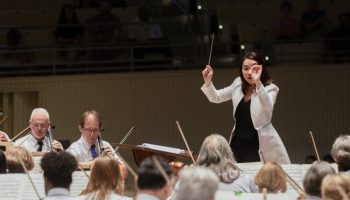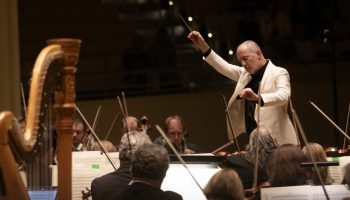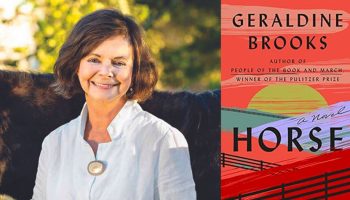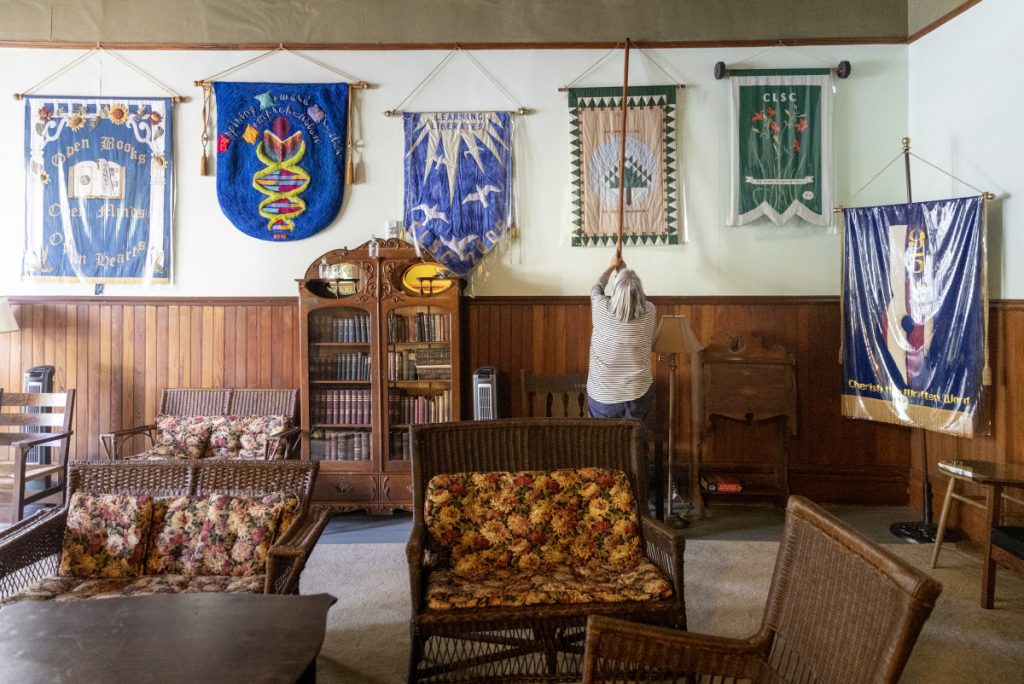
Story by Kaitlyn Finchler & Julia Weber
Photos by Brett Phelps
The Chautauqua Literary and Scientific Circle banners are a tradition dating back to 1882. Each year, the CLSC graduating classes create a banner they feel symbolizes the class name and what they would like to accomplish.
The CLSC itself is reflective of American history, often referred to as “one of the oldest book clubs in America,” created in the aftermath of the Civil War.
“We’re really looking at American history and world history,” said Judy Barie, the Susan and John Turben Director of CVA Galleries. “Not just American, but world history. It’s very relevant and that’s the thing that had the biggest impact on me.”
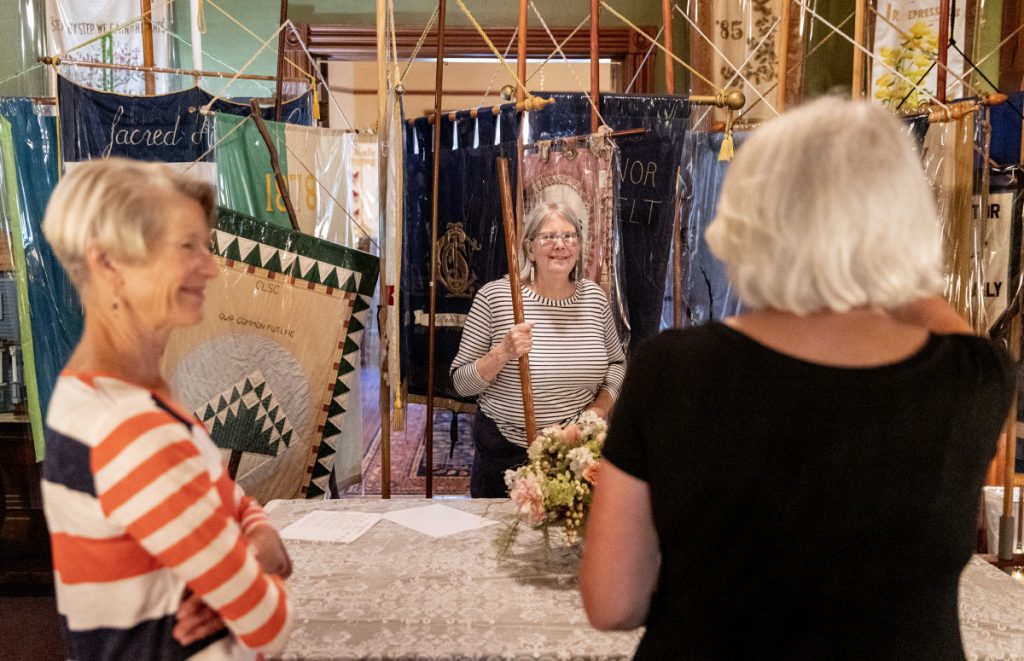
Barie will give lead a docent tour, titled “Folk Art or Fine Art,” about the importance of art within this collection of banners at 1 p.m. today at the Literary Arts Center at Alumni Hall.
These banners, in addition to celebrating the CLSC graduating classes, poignantly reflect the times and environments in which they were created, both in terms of the medium used and visual content.
The very first banner, created for the CLSC Class of 1882, was “made of deep blue velvet with a picture of the Hall of Philosophy on the front,” Daily reporter Mary Lee Talbot notes in her book, Chautauqua’s Heart. It not only served as the banner for that very first class, named The Pioneers, but as the official banner for the CLSC itself — a reproduction is still displayed prominently at literary arts events. The 2023 banner was created with that class motto, “Power of the Word” in mind. The person of honor for this year’s class was prolific author Salman Rushdie, who was attacked on the Amphitheater stage Aug. 12, 2022. The banner reflects the theme of resilience in a world where free speech is constantly challenged.

The banners are visually beautiful, Barie said, but the spirit and messages of them resonate more with her.
“I went over (to see them) and I was really struck by one, the beauty of them (and) two, the amazing craftsmanship of them,” she said.
Barie said she was most impressed with how well each banner aligned with what was happening during that year in the United States. She was particularly struck by the comprehensive story that the banners tell in conversation with one another.
When shown all together, the banners tell a detailed history of Chautauqua’s origins and evolution as a place of knowledge, critical thinking and exploration.
She said she hopes her docent tour sparks a dialogue. She wants to know what viewers see in the various banners and how the works impact their perspectives, especially in the context of American history and shifting design trends throughout CLSC history.
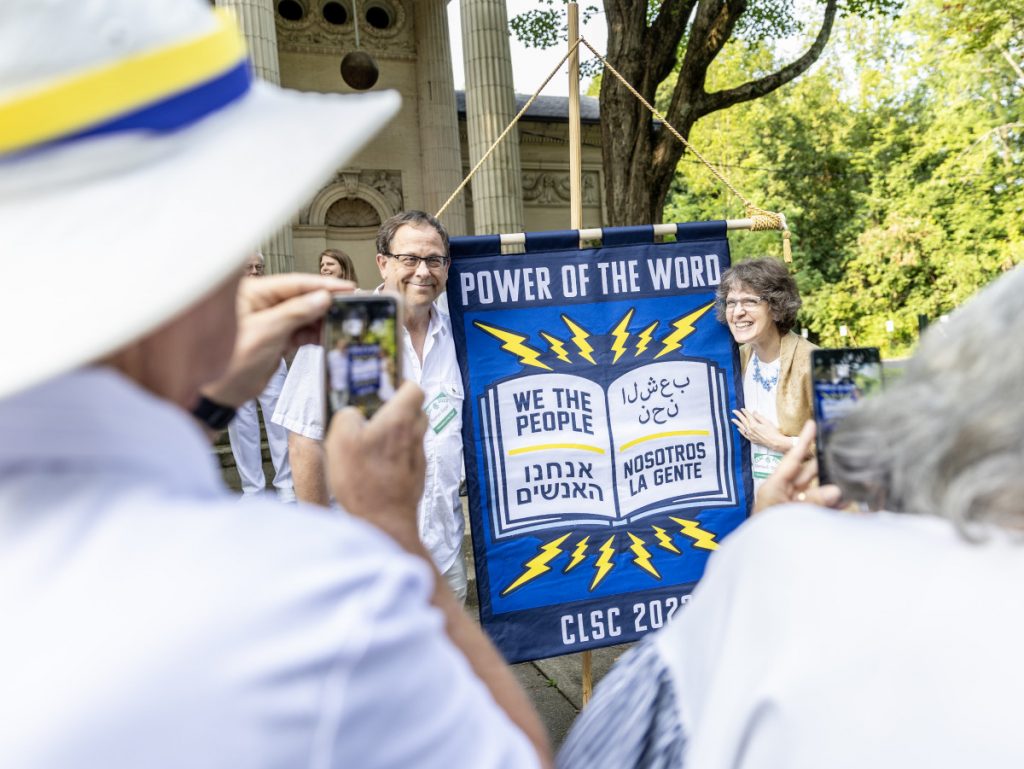
“I love the visual aspect, but I love the history (more),” she said. “They were so designed in alignment with the years they were done, and that’s really what I’m going to talk about.”
She is especially interested in the banners that incorporate quilting techniques into them because of the time-consuming nature of the art. Barie estimated that quilting for some of the banners took months to complete, given the amount of hand-stitching and intricate design work that was required.
“They’re very elegant,” Barie said. “Most of the quilts are very elegant in simplicity and again, reflective of art movements in the years when they were done, too. They really match society. I found that the most intriguing.”
The artwork within the banners has been recognized by many — including in 2000, when the Smithsonian Institution featured 27 banners in an “American Century” exhibit in Washington, D.C.
Barie said she is passionate about writing and literature being seen as an art form in line with traditional visual and performing arts mediums.
“To combine the two (mediums) with these banners is really something special that you don’t see in many places,” she said. “A lot of these banners are museum quality.”
During her discussion, Barie intends to talk about the history of American craft and the contemporary American craft movement. She also plans to talk about some of her favorite banners and other banners of particular significance.
She hopes Chautauquans will share their own perspectives and engage in a dialogue about art, literature and history in Chautauqua and in the United States.
She also plans to tie-in how the banners represent the CLSC book selections for the year that an individual banner was created. The original CLSC curriculum was built as a correspondence course around literature, science and foreign culture, mixed with elements of fiction and poetry.
Barie said looking at the banners with a “fresh, contemporary eye,” allows one to see they were “ahead of their time.”
“I think it’s a really beautiful union from the books to the banners,” she said.


